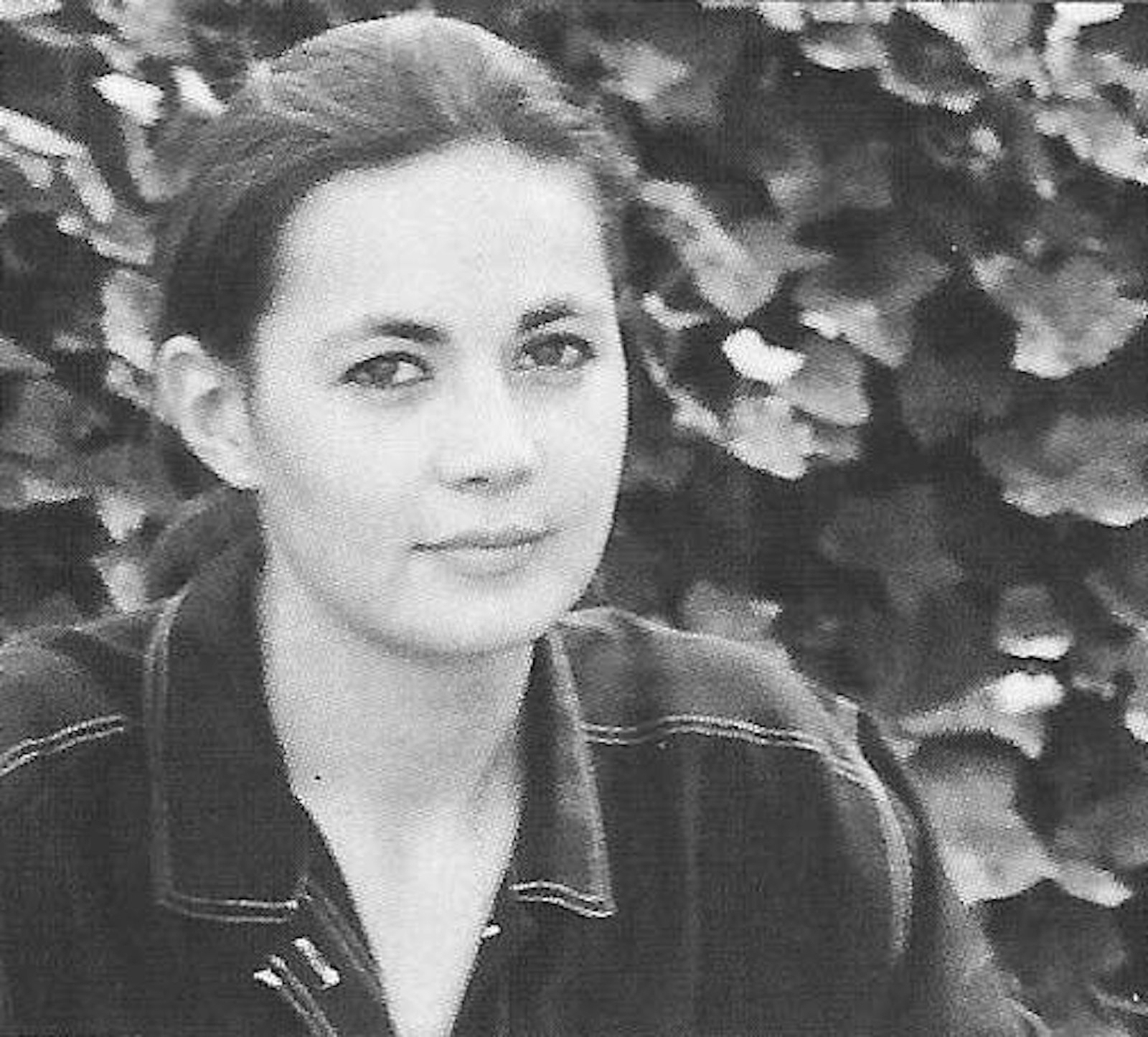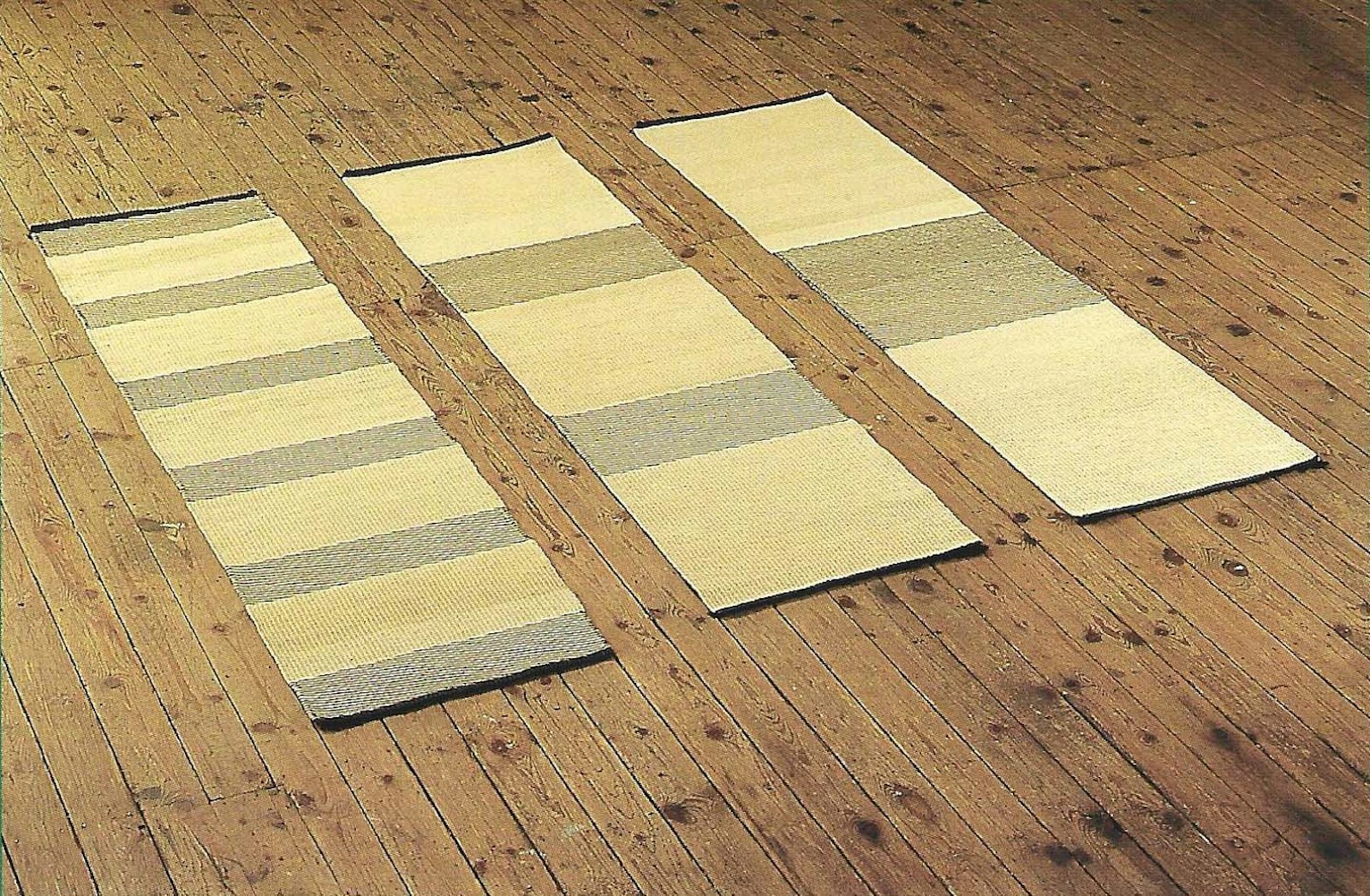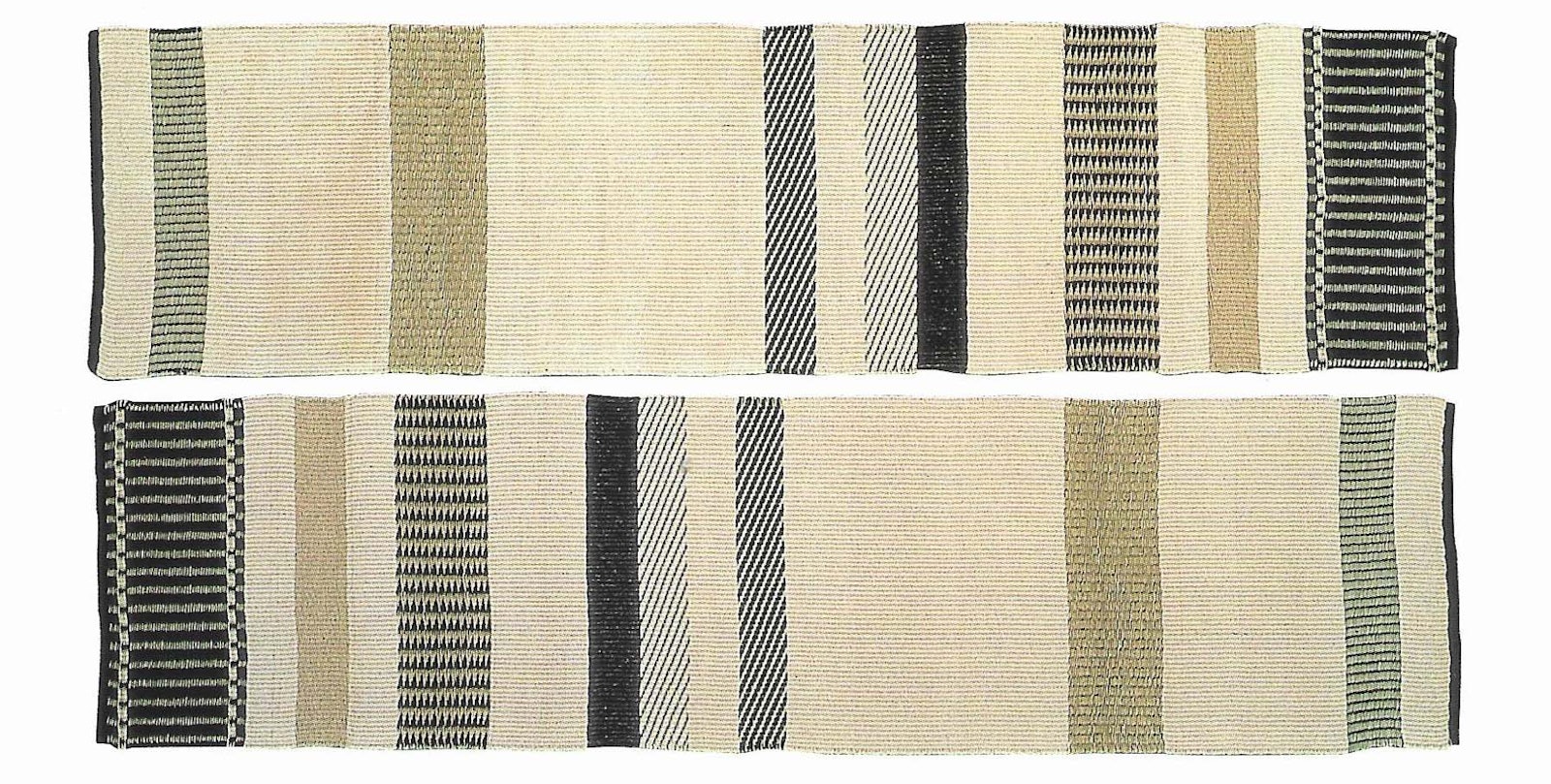de Velde
Katrien Rondelez
In 1985-1986, Katrien Rondelez (°1967) was already producing textile designs for the Finnish company Finlayson.
For lack of a specific training course in Flanders, she was compelled to go to the weaving workshop of La Cambre (Ecole Supérieure des Arts Visuels) in Brussels, although this was not evident for a Flemish-speaking student. Still, she obtained the highest grade there, as she did again at her next course in textile serigraphy at the 'Académie du soir de Dessin et des Arts Décoratils' in Watermaal-Bosvoorde.
lnitially, she wove upholstery for chairs or other utilitarian objects. But the emphasis gradually shifted to woven carpets. In this context, she says: "When creating an interior atmosphere, a central place is attributed to materials. With their specific forms and dimensions, composed of constrasting materials, carpets offer the freedom required when composing space."
The composition is modulated in the specific space. In her search for pleasant combinations, she experiments with materials such as cotton, flax, rubber and plastic. According to the luminosity of a particular space, the materials vary from mat to brilliant and the colour from vivid and bright to soft and dark.
Katrien Rondelez also works for industry. She got the experience required for this from Pur Design in Brussels. Following the foundation of studio Hastings (1996-1994) and some commissions for Stillwater (New York), she now collaborates with De Witte-Lietaer in the highly competitive sector of upholstery for the car industry. Currently, she is designing fabrics for General Motors, Opel, Saab, Chevrolet and Truck-Detroit for their cars of the year 2000.



